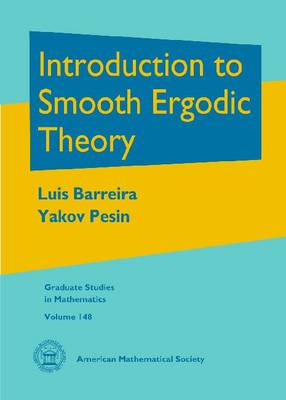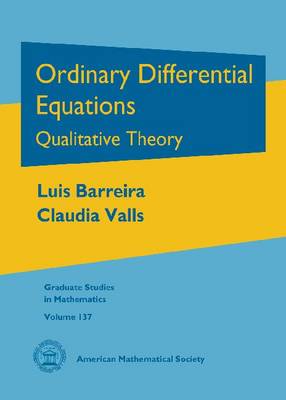Graduate Studies in Mathematics
2 total works
This book is the first comprehensive introduction to smooth ergodic theory. It consists of two parts: the first introduces the core of the theory and the second discusses more advanced topics. In particular, the book describes the general theory of Lyapunov exponents and its applications to the stability theory of differential equations, the concept of nonuniform hyperbolicity, stable manifold theory (with emphasis on the absolute continuity of invariant foliations), and the ergodic theory of dynamical systems with nonzero Lyapunov exponents. The authors also present a detailed description of all basic examples of conservative systems with nonzero Lyapunov exponents, including the geodesic flows on compact surfaces of nonpositive curvature.
This book is aimed at graduate students specialising in dynamical systems and ergodic theory as well as anyone who wants to acquire a working knowledge of smooth ergodic theory and to learn how to use its tools. With more than 80 exercises, the book can be used as a primary textbook for an advanced course in smooth ergodic theory. The book is self-contained and only a basic knowledge of real analysis, measure theory, differential equations, and topology is required and, even so, the authors provide the reader with the necessary background definitions and results.
This book is aimed at graduate students specialising in dynamical systems and ergodic theory as well as anyone who wants to acquire a working knowledge of smooth ergodic theory and to learn how to use its tools. With more than 80 exercises, the book can be used as a primary textbook for an advanced course in smooth ergodic theory. The book is self-contained and only a basic knowledge of real analysis, measure theory, differential equations, and topology is required and, even so, the authors provide the reader with the necessary background definitions and results.
This textbook provides a comprehensive introduction to the qualitative theory of ordinary differential equations. It includes a discussion of the existence and uniqueness of solutions, phase portraits, linear equations, stability theory, hyperbolicity and equations in the plane. The emphasis is primarily on results and methods that allow one to analyze qualitative properties of the solutions without solving the equations explicitly. The text includes numerous examples that illustrate in detail the new concepts and results as well as exercises at the end of each chapter. The book is also intended to serve as a bridge to important topics that are often left out of a course on ordinary differential equations. In particular, it provides brief introductions to bifurcation theory, center manifolds, normal forms and Hamiltonian systems.

